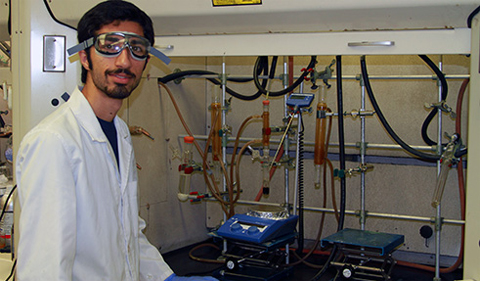
Ramin Rabbani
By Ramin Rabbani
Graduate Student in Chemistry at Ohio University
If you are a graduate student in chemistry, physics or biology, you may have to teach in one of the many labs offered for undergraduates. A lab is different compared to a class in many aspects, but the main difference is doing hands-on work in lab classes.
Hence, issues like safety and class management are of great importance for TAs. Prior to any preparations for your lectures, make sure you are aware of any possible safety hazards that might happen during your class, and be prepared to come up with a solution in emergency situations. Get familiar with the places around the lab, check emergency exit doors (if there is any), find first aid kit and extinguisher the very first time you enter the lab.
As part of the check-in process in some of the labs, students are asked to give necessary information like allergies to specific materials, any type of conditions or disabilities. If you did not find it on the check-in sheets, you may send an email to your students and ask if they are willing to share personal information. Sharing these personal details is voluntary, but encouraging students to provide them will be very helpful in case of any emergency.
A good lecture saves a lot of time. Many of the TAs routinely use slides or the board to lecture, but explaining with the help of lab instruments will be more effective. Demonstrating the practical work in the lab by using instruments could help you deliver your message to students properly. One of the difficulties for TAs in the lab is that they do not have access to all students at the same time, which makes it harder to solve confusions for students. Considering all the issues mentioned above, an informative lecture should make the class easier for both instructor and students.
Try to interact with students during the experiments, but do not interrupt their work. Catching mistakes is easier for TAs. If a student is not following procedure, let them know that they are not on the right track. You will recognize the “Help-seeker” students very soon. Helping them does not necessary mean to run experiment for them! You should allocate your time evenly for all students. Also, keep your eyes on “trouble-maker” ones, especially if students are working in groups. In these cases, if you notice a student does not have the same contribution as other group members, you must remind them to be more cooperative with others.
If you do not have experience in teaching, doing it for the first time might seem hard for you. You can always get advice from instructors or senior TAs. Some TAs might not have enough background on the class they are supposed to teach. Performing a trial experiment will be helpful to become more confident for class. Make sure to get familiar with the equipment, their names and correct pronunciations.
Do not feel nervous if you are required to teach a lab. Any kind of class needs hard work for preparation, but labs are always fun to teach!
See more Resources for Teaching Assistants at Ohio University.



















Comments